Daggerboard - use of? |
Post Reply 
|
Page <1234 6> |
| Author | |
G.R.F. 
Really should get out more 
Joined: 10 Aug 08 Location: United Kingdom Online Status: Offline Posts: 4028 |
 Post Options Post Options
 Quote Quote  Reply Reply
 Topic: Daggerboard - use of? Topic: Daggerboard - use of?Posted: 15 Sep 08 at 9:33pm |
Well you don't actually drop too far, and it only works when you've got a big course with wide corners, don't go trying it on a lake. You're just playing the same sort of angles as you do downwind, shallower faster, you just have to develop a sort of instinct for when it will pay to go wide fast and low, as against high and narrow. We're finding new stuff out about this boat all the time, just how many of our windsurf skills are transferable and we had a nice long beat on Sunday and we had a bit of a lead worth risking an experiment on with the plate. |
|
 |
|
redback 
Really should get out more 

Joined: 16 Mar 04 Location: Tunbridge Wells Online Status: Offline Posts: 1502 |
 Post Options Post Options
 Quote Quote  Reply Reply
 Posted: 15 Sep 08 at 9:46pm Posted: 15 Sep 08 at 9:46pm |
|
I would raise it in strong winds in the 4000 if I had
time - but we don't. Probably the sideways forces its able to resist are related to the square of the speed through the water so at speed a much smaller board would be good. Also if it were not so deep the centre of lateral resistance will be higher meaning less heeling force. When I used to crew a 800 it was noticeable that the board could be stalled by over-sheeting the main in light winds on a beat. This practically stopped the boat and felt like sailing over an anchor warp. The 4000 is less likely to do this as the board is much bigger and probably explains why we are faster than an 800 in the really light stuff. However I can feel a slight difference on the helm if we are over-sheeted. In light winds my crew sometimes lifts the board when we are running deep - I think its a distraction and doesn't make the slightest difference. If we were a slow boat the slight leeway might be of benefit but in a fast boat the board will still be gripping and so there is no benefit. In a fast boat if it did stall and allow more leeway the drag would be so high the speed loss would be more of a disadvantage then the downwind distance gained. The 4000 has a very long pole and so if there is any over-sheeting of the kite you get quite a lot of lee helm - that is a disaster, so I always get the kite down if the crew can't sail with the luff curled. I would like to try sailing tight kite reaches in strong winds with the board up a bit, but the loads are so high and there's no time so it has to stay down. Boats with pivoting boards do go upwind in a blow better with less board since this also swings it backwards which reduced weather helm. I remember even the Laser benefits from a raised board in a blow since this reduces heeling forces. We gybe with the board right down. It probably would be good to get it up a bit but provided you keep the boat flat the effects of a deep board do not occur. |
|
 |
|
JimC 
Really should get out more 

Joined: 17 May 04 Location: United Kingdom Online Status: Offline Posts: 6662 |
 Post Options Post Options
 Quote Quote  Reply Reply
 Posted: 16 Sep 08 at 8:10am Posted: 16 Sep 08 at 8:10am |
Note that this has stopped being a beginner response in any shape or form - Sorry! I'd need to see some measured data to be convinced this isn't a myth. A board needs to be sized for the worst case situation, which is coming out of a tack at slow speed with maximum side force and minimum flow over the board. The actual amount of area you need running deep in the light is tiny by comparison. And then consider what actually happens if the boat were to be making extra leeway, which is really just having the hull going sideways against the direction of travel. The sails have got the same apparent wind at the same angle as if the boat were going straight, they are just marginally rotated compared to each other. And extra leeway can only really be achieved by running the foil stalled or semi stalled, in which case the drag must be tremendous. Going deep with the daggerboard up has a number of effects - the centre of lateral resistance moves aft just as it would with a pivoting centreboard, because the side force is shared with the rudder. The wetted area of the foil and thus skin friction decreases as you lift a daggerboard. The induced drag of the foil stays much the same (unlike a pivoting board where it surely must increase). But I've come to believe that nearly everything people "know" about leeway is wrong, because the wind and the sails neither know or care in what direction the hull happens to be pointing underneath them*. Leeway is really just the angle of incidence on the centreboard... *at least until bits of hull or rigging actually get in the way of getting the sails at the right angle... Edited by JimC |
|
 |
|
redback 
Really should get out more 

Joined: 16 Mar 04 Location: Tunbridge Wells Online Status: Offline Posts: 1502 |
 Post Options Post Options
 Quote Quote  Reply Reply
 Posted: 16 Sep 08 at 10:43pm Posted: 16 Sep 08 at 10:43pm |
|
Of course I agree with JimC. Even if there were any
benefit in leeway it would be slight and not worth the distraction it causes. However if raising the board makes it easier to keep the boat flat then you'll find the benefit is great. And in strong winds it is generally a good idea. In strong winds the boat is moving fast and so a smaller area is sufficient, also by raising it you decrease the leverage and hence heeling forces. Incidentally I'm using Google Chrome now and it checks my spelling as I go along. I like it. |
|
 |
|
Medway Maniac 
Really should get out more 
Joined: 13 May 05 Location: United Kingdom Online Status: Offline Posts: 2788 |
 Post Options Post Options
 Quote Quote  Reply Reply
 Posted: 17 Sep 08 at 12:05am Posted: 17 Sep 08 at 12:05am |
|
Think you might want to edit that para, Jim ("daggerboard up.... wetted area....increases" - eh?) But I think we agree that you don't need so much board area offwind to achieve the same leeway angle? So one question in light-moderate weather is: assuming the helm balance is still acceptable, does the drag reduction achieved by raising the board offwind justify the distraction of raising it? I'd tentatively suggest the answer is: only if the leg being sailed is a long one and you've nothing better to do (e.g. no kite to trim). In windy weather, Frank Bethwaite advocates raising the board whatever (though probably not that much in percentage terms) in order to raise the centre of effort to enable more thrust. But when you think that the lever arm is from a couple of metres up the mast down to half a metre below the waterline, will a few centimetres really reduce the heeling moment appreciably? Isn't it more a case of making the handling/gust response more forgiving? I've tried it in many classes and I can't honestly say i've noticed any benefit one way or the other; but then maybe I'm insensitive to such subtleties. There was one occasion, however, when I was sailing a Laser on a reach and it was not planing; I hoiked up the board and suddenly the bow rose and the boat shot forward onto the plane (but maybe I just cleared some rubbish off the board?!) In summary, as people have suggested, there are many factors against raising the board: - helm balance, boat stability, space in the boat, and time/hands available. On the other hand there are potential benefits of drag reduction, and boat handling and (maybe) increased thrust in a blow. Whether the pros outweigh the cons will depend on the class and the conditions. So I'd suggest that people new to a class or sailing in general look at what the top guys in their class are doing and do the same - one of them will surely have tried doing it differently and at least found there was no significant advantage. |
|
 |
|
redback 
Really should get out more 

Joined: 16 Mar 04 Location: Tunbridge Wells Online Status: Offline Posts: 1502 |
 Post Options Post Options
 Quote Quote  Reply Reply
 Posted: 17 Sep 08 at 12:17am Posted: 17 Sep 08 at 12:17am |
|
Ah yes that's very good advice for a beginner. Always do
what the best guys do. When you can keep up with them then you can allow yourself to innovate. |
|
 |
|
G.R.F. 
Really should get out more 
Joined: 10 Aug 08 Location: United Kingdom Online Status: Offline Posts: 4028 |
 Post Options Post Options
 Quote Quote  Reply Reply
 Posted: 17 Sep 08 at 8:34am Posted: 17 Sep 08 at 8:34am |
|
Well for me this discussion is very ironical.
Years ago I designed a windsurfing board that I had built at Parkers, and it was there that I learned about all the various types of centreboard (I picked up on gybing plates which is another entire thread). Prior to that I had (and was probably the first windsurf sailor to do so)converted my then racing board to accept a proper wooden foil and that it would retract fully into the hull. The result was nothing short of spectacular. This discussion just simply wouldn't take place in windsurf racing circles, any wind above a force four and you kick the plate even if you sailing quite high angles, you drive off the fin. (But then our rigs are raked well aft). We can feel every nuance of the resistance of the plate, so, that reducing its area has a positive effect in a boat, I am in no doubt. Hence my logic for not contemplating one without a fully retracting centreboard (that and our dodgy beach.) Imho the reason no dinghy or skiffy appears to be able to break the 25 knot barrier is because of the drag, if you could some how kick back your Cherub Plates for instance and offset the lee helm by bringing the mast foot back you would notice a huge speed increase, the drag of a plate is immense and when it's gone the whole craft (a three metre eighty long board in our case) leaps forward, feels light and skips over the surface. The same used to be the case of round bottomed division 2 boards so it's not just the planing surface. So the point of all this. Reduce the plate surface area in the water whenever and wherever you can would be my advice, but within MedManiacs suggestion, only if by doing so you dont lose out in another area. (One of the reasons for us bringing the controls back to the helm once we get round to it). One final point, on a board, kicking it back or reducing it a little bit never had any great effect, it was only dumping it entirely that made the significant difference. The problem obviously in doing that in a boat sailed by boat handling numpties like us... Where are you going to stand to get it back up again in order to put the plate back down in order to get it back up again.. Edit, just another point I recall, without the plate kicked up on a board it is damn near impossible to bear off around a mark above a force four..In fact prior to retracting plates they just to call it the 'force four barrier'. Edited by G.R.F. |
|
 |
|
JimC 
Really should get out more 

Joined: 17 May 04 Location: United Kingdom Online Status: Offline Posts: 6662 |
 Post Options Post Options
 Quote Quote  Reply Reply
 Posted: 17 Sep 08 at 9:27am Posted: 17 Sep 08 at 9:27am |
|
I can't help thinking that one of the key reasons good boards can break 25 knots so much more readily is that they aren't dumb enough to try and carry the same rag in 25 knots of wind as in 2.5 knots... Of course very immediate rig control and excellent power to weight ratios do no harm at all either.
Were it practical, which of course it isn't, it would have been an interesting comparison to have tried a vertically lifting daggerboard on your board experiments. The thing about a board that pivots in its case is that the wetted surface doesn't change very much until its almost completely up... Take this sketch as an example. 
The same board is shown half and three quarters up, both as a pivoting cb and as a daggerboard. Compare the difference in areas, and also then think about the span of the foil (= length presented to the water) which is the main factor leadng to induced drag. I suspect that the one reason you had to kick the board all the way up to make much difference is that until its 90% or more of the way up there is very little difference anyway. |
|
 |
|
Captain Morgan 
Far too distracted from work 
Joined: 03 Sep 08 Location: United Kingdom Online Status: Offline Posts: 211 |
 Post Options Post Options
 Quote Quote  Reply Reply
 Posted: 17 Sep 08 at 12:03pm Posted: 17 Sep 08 at 12:03pm |
|
Thanks to all for your input, all of your comments and discussions have gone a long way to proving what I was suspecting - that there is no straightforward "method" of using the daggerboard! To quote Medway Manic: "In summary, as people have suggested, there are many factors against raising the board: - helm balance, boat stability, space in the boat, and time/hands available. On the other hand there are potential benefits of drag reduction, and boat handling and (maybe) increased thrust in a blow. Whether the pros outweigh the cons will depend on the class and the conditions. So I'd suggest that people new to a class or sailing in general look at what the top guys in their class are doing and do the same - one of them will surely have tried doing it differently and at least found there was no significant advantage." I would say that this is most definitely the case; RYA training teaches "the basics" in a classic way and, as sailors progress, then boat handling does become more specific. Personally, I have noticed that various boat handling techniques adopted by Class Associations are usually the preferred or even fashionable way of sailing a particular class. In at least one case, I didn't follow a Class Association guideline and subsequently found a faster, easier method of sailing the boat. This brings me back to my initial view that maybe it's best to watch what the fastest guys are doing in their boats, but also to experiment out on the water to find whatever method works best in different conditions. Trial and error (lots of it)... |
|
 |
|
craiggo 
Really should get out more 

Joined: 01 Apr 04 Location: United Kingdom Online Status: Offline Posts: 1810 |
 Post Options Post Options
 Quote Quote  Reply Reply
 Posted: 17 Sep 08 at 12:27pm Posted: 17 Sep 08 at 12:27pm |
|
The RS700 has a daggerboard that can be raked in the slot however to my knowledge most people arn't really bothering to use the rake function anymore. The idea was that the rig on the 700 can be raked a long way back and a second clew strap attached up the leech is used to maintain the boom at the orignal height, this is for very windy conditions. In raking the rig so far back the only way to balance the forces on paper was to reduce daggerboard area and also move the centre of effort of the board aft.
The reason for not really bothering anymore is that the sailors have worked out how to sail with the rig raked within the region of the bottom clew strap in most sailable wind conditions. This happened in the 600 where most of the travelling fleet never dropped down to the reefed rig as they learnt to handle the full rig in all practical conditions. The 700 fleet now advocates lifting the board upto 6inches as the wind increases and you progressively de-power the sail, The lifting of the board has two effects, 1. It helps to restore the heeling moment to the normal levels, and 2. It offloads onto the rudder so that the combined centre of effort for lateral resistance moves aft as per the de-powered rig. |
|
 |
|
Post Reply 
|
Page <1234 6> |
| Forum Jump | Forum Permissions  You cannot post new topics in this forum You cannot reply to topics in this forum You cannot delete your posts in this forum You cannot edit your posts in this forum You cannot create polls in this forum You cannot vote in polls in this forum |
Copyright ©2001-2010 Web Wiz
Change your personal settings, or read our privacy policy





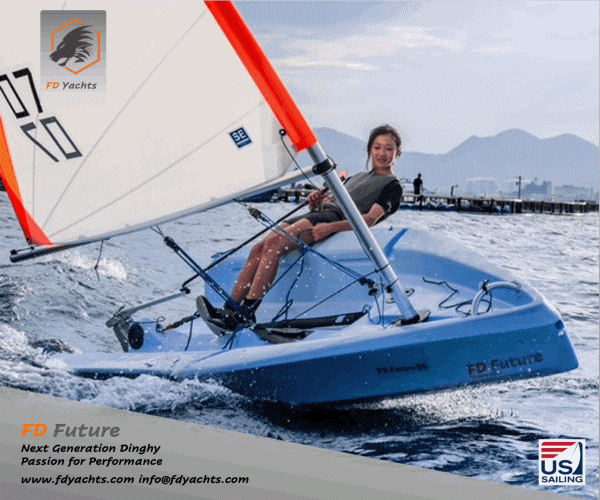
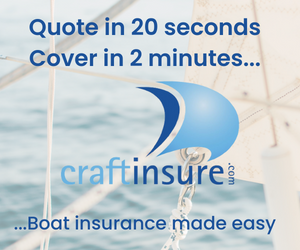


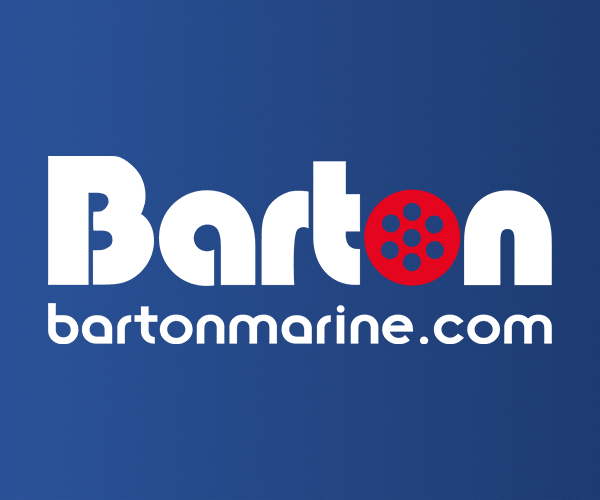



-(1)-202408140552.gif)
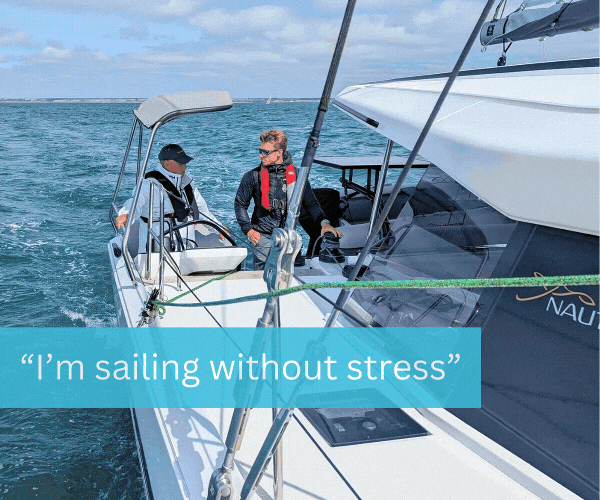
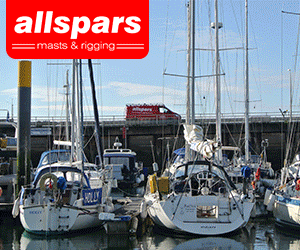

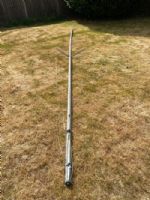







 Printable Version
Printable Version Delicious
Delicious Digg
Digg Facebook
Facebook Furl
Furl Google
Google MySpace
MySpace Newsvine
Newsvine reddit
reddit StumbleUpon
StumbleUpon Twitter
Twitter Windows Live
Windows Live Yahoo Bookmarks
Yahoo Bookmarks Topic Options
Topic Options